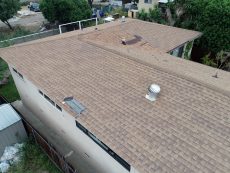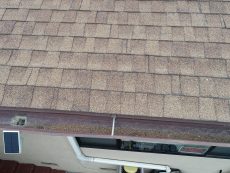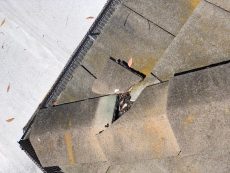Understanding the specifics of buying solar for your home can be a daunting task, so we often like to compare it to something we are all more familiar with- CARS. Solar panels become more appealing as more people decide to take back their control of electricity costs from the utility. So with the car metaphor in mind, we’ll compare installing new solar panels on an old roof by asking you the following question: Would you put a tired and near-end-of-life engine into an otherwise brand-new car?
Homeowners who start their search for buying solar panels for their homes other discover that their roof needs some attention. They are those few lucky ones. Some less than reputable solar companies have been known to disregard the roof condition and not tell the customer to make the sale.
When looking for the right company to install solar panels on your roof, other than the specifics of the solar panel components, you should ask the installer about the condition of your roof.
The Condition Of Your Roof Matters For Solar Panels
Your home’s roof condition is paramount to the structural integrity of your home. A roof in good condition will protect you and everything else underneath from the harsh elements of the world. A roof in great shape is a prime candidate for solar panels because it will support the continuous functionality of your solar panels over many years. This is important for two reasons: 1) You expect to get what you pay for. Anytime the solar panel’s functionality is interrupted, you are losing the production of valuable solar power. More importantly, 2) There is a cost associated with removing and replacing the solar panels on your roof.
The thing that you have to bear in mind, if you think you may be OK when you install solar panels on a questionable roof, is that solar panels will function for a very long time. The warranties for solar panels run 25 years for most. This means they’re expected to be on the roof for at least 25 years, if not more. At the end of 25 years, the panels don’t simply turn off; they keep working. After 25 years, they will still produce significant power, anywhere from 80-90% of their original capacity.
Perhaps you may think that it may not matter much since you are “planning to move in the next 5-7 years”, and while that may be the case, what if it doesn’t come to fruition? If you install a 25-year solar panel system on a roof with less than ten years of life span, you will set yourself up for an additional expense later. Now you are back to square one, and if you move and sell your home, the next homeowner will pay for an inspection, and any delayed roof repairs will be brought to your attention.
As solar and roofing professionals, we at DroneQuote strongly suggest you consider the condition of your roof when you are planning to install solar panels. Even if it means you end up NOT installing solar panels, we will invest first in your roof’s integrity. The primary reason is that we often find that customers who waited too long “to save money” end up paying for additional repairs for wood rot or other issues caused by leaks. Remember that not seeing a roof leak doesn’t mean it isn’t happening.
How To Identify A Worn Roof For Replacement
Before I installed a new roof on my home, I had a nagging feeling of concern whenever it rained. Anytime I knew it would rain, I worried. The worst was when I would be asleep and wake up to the sound of rain. I would immediately think about how my roof would collapse over my head. The problem was that from the ground level, the roof looked fine. Now imagine someone who isn’t a roofing expert, those people may not even think about their roof until it is too late and a problem is tapping them on the shoulder, or worse, water starts dripping from the ceiling. That is no way to live in your home if you ask me.
Depending on the kind of roof you may have, there are a few telltale signs you can look for. First and foremost is the age of the roof. If you have lived in your home for over 20 years and have never replaced your roof, I can tell you already that you are nearing the end of your roof life. Worse yet is if you have lived in the home for less time but didn’t clearly understand the roof age at the time of home purchase.
Asphalt shingle roofs are very common; fortunately, it is easier to spot issues with them than with other roofs. The reason is that the overlayment (the shingles) protects the rest of the roof from the elements and that overlayment is easily visible. In the image below, you can see that the shingles are missing and look somewhat worn. This is a perfect example of a roof needing a re-roof before installing solar panels.

The old roof needs a re-roof before solar.
Another place to look for telltale signs of aging and wear and tear on the roof is on the ground. Composition shingle roofs give little wearing down signs. You can tell by the number of granules you find on the ground or rain gutters. The image below shows that the rain gutters on this roof have many granules.

Loss of granules shows wear
It is not all bad news for you if you have an asphalt shingle roof and want to install solar panels. The upside is that installing solar panels on this kind of roof is easier than on other roof types. Which means you will see it for a more competitive price.
Other roof types make it harder to tell whether or not they should be replaced. Examples of this are concrete tile or clay tile roofs. The tiles protect the underlayment from sunlight and water. On the other hand, the other half of the protection is the tar paper installed underneath the tiles. To further complicate things, tiled roofs may make it harder to spot issues because there aren’t visible signs of aging or wear. Tile roofs that are cracked, missing, or dislocated are hard to spot. With so many tiles on a roof and its different roof sections, it may be hard to see a missing, damaged, or dislocated tile.

Broken roof tile
The roof tile in the image below shows a tile cracked at the ridge section of a hip. Still, fortunately, it was near the bottom of the ridge. This means any water seeped through didn’t come into contact with much of the underlayment. There seemed to be a way to drain water where the flat roof met the pitched roof.
Why It Is A Smart Investment To Replace The Roof With New Solar Panels
You may be saying that potential issues with your roof could be why you wouldn’t look into solar. On the contrary, when you need a new roof is the best time to consider solar. You will need a new roof regardless of whether or not you put on solar panels. And chances are, you will eventually move forward on solar panels sooner or later. Instead, why not install a new solar panel system with your new roof? Both are meant to have a lifespan of at least 25 years.
Otherwise, you’ll eventually cross the bridge of having to remove the panels so you can replace the roof. Nobody wants to do that since it is throwing good money away.
Think again about how much work you will put in to get the best deal. You can ditch all the lengthy sales pitching and presentations. And move forward to an efficient and effective method to go solar.
Suppose you want to buy solar panels or roofing. In that case, our professional solar panel and roofing experts are here to help you make the best buying decision. We invented DroneQuote to avoid all the songs and dances that come with the old way of getting quotes. Try getting multiple quotes using Watts My Price to start your solar journey. You can also give us a call or request an appointment with us, which takes place at your convenience and with a brief online presentation. We pride ourselves in being your partners in the process of helping you buy because nobody likes being sold.
